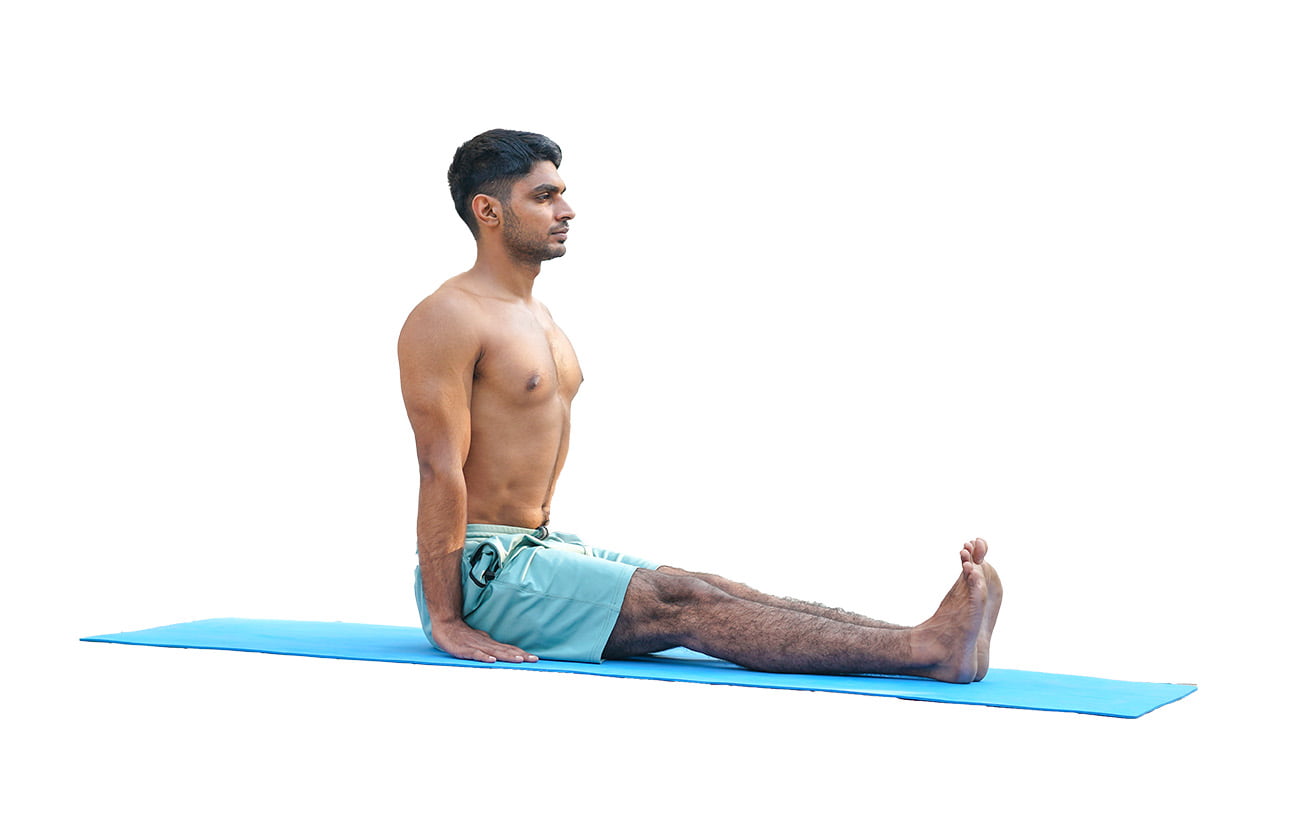danda (staff or stick) + asana (pose)
Sanskrit: दंडासन
Difficulty Level- Beginner
Pose type: Seated
Also Known As: Staff Pose or Stick Pose
Pronounced as DAN-DA-AAS-NAA
Table of Contents
Introduction Of Dandasana
Dandasana is derived from the Sanskrit terms ‘danda’ mean stick or staff and ‘asana’ means pose. This pose is an Beginner level yoga posture in which one’s spine and legs are straight as a staff or stick.
Dandasana is a simple seated posture with the legs straight and spine upright. Usually, it’s practiced as a warm-up yoga pose to leap into the deeper practices of asanas.
Dandasana is called a staff pose or stick pose because the spine represents the staff carried by swami danda, who are Indian renunciates. Through this pose, practitioners can cultivate inner strength, discipline, and focus on their spiritual path.
How To Do Dandasana: Step-By-Step
- Sit on the ground with your back straight and your legs straight in front of you. Your legs and feet should be parallel and hip-width apart.
- To lengthen and straighten the spine, press the sitting bones into the floor and aim the crown of your head to the ceiling.
- Press out through your heels while flexing your feet.
- Keep your palms on the ground next to your hips to support your spine, and keep your shoulders relaxed. Maintain a straight but relaxed body.
- Relax your legs to secure your lower half to the ground.
- Hold this position for 20 to 30 seconds.
- To release : Slowly relax your legs, lower and upper back, neck, and writs.
Benefits Of Dandasana

- It helps in improving the posture of the lower back.
- It helps in increasing the flexibility of the hips and pelvis.
- It helps in restoring the natural shape of your spine, hips, and leg.
- It helps in strengthening all the major core muscles.
- It directs energy throughout the body and relaxes the brain, nervous system, and endocrine system.
Contraindications Of Dandasana
- Avoid practicing yoga Dandasana if you have injuries in your arms, wrist, or back.
- f you are suffering from severe pain in your legs, arms, or back, let yourself heal first before you practice Dandasana.
- If you have recently undergone surgery, avoid practicing this asana.
Frequently Asked Questions (FAQs)
Define Dandasana?
Dandasana is derived from the Sanskrit terms ‘danda’ mean stick or staff and ‘asana’ means pose. This pose is an Beginner level yoga posture in which one’s spine and legs are straight as a staff or stick.
What is the duration of Dandasana?
One can stay in Dandasana for 20-30 seconds and can hold for longer durations after regular practice.
What is the purpose of Dandasana?
To restore the natural shape of your spine, hips, and leg.

